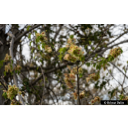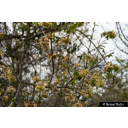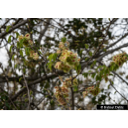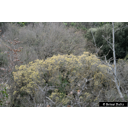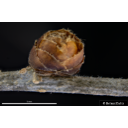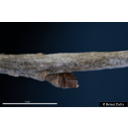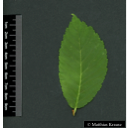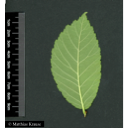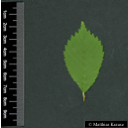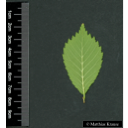Useful information about the taxon (species, subspecies, variety...)
Ulmus minor Mill. 1768
Ulmaceae
(APG IV)Field elm
Akzessionnummer: SP-LB-031-10171
Pflanzjahr: 2004
Taxon concept: The Plant List (2014), version 1.1
Distribution: Europe, Turkey, Cyprus, Syria, Libya, Israel
Ulmus glabra Mill. - Synonym: Ulmus minor Mill. bei The Plant List (2010); Familie: Ulmaceae (APG III)Ulmus minor Mill. - Accepted: Ulmus minor Mill. bei The Plant List (2010); Familie: Ulmaceae (APG III)Ulmus minor Mill. - Accepted: Ulmus minor Mill. bei Zander 2008; Familie: Ulmaceae (Zander 2008)Ulmus carpinifolia Gled. - Unresolved: Ulmus carpinifolia Gled. bei The Plant List (2014), version 1.1; Familie: Ulmaceae (APG III)Ulmus minor Mill. - Accepted: Ulmus minor Mill. bei The Plant List (2014), version 1.1; Familie: Ulmaceae (APG III)Ulmus carpinifolia Gled. - Synonym: Ulmus minor Mill. bei Plants of the World Online; Familie: Ulmaceae (APG III)Ulmus carpinifolia Gled. - Unresolved: Ulmus carpinifolia Gled. bei The Plant List (2014), version 1.1; Familie: Ulmaceae (APG IV)Ulmus minor Mill. - Accepted: Ulmus minor Mill. bei Schmeil-Fitschen 2019; Familie: Ulmaceae (APG IV)Ulmus minor Mill. - Accepted: Ulmus minor Mill. bei BfN Checklist Flora DE; Familie: Ulmaceae (APG IV)Ulmus minor Mill. - Accepted: Ulmus minor Mill. bei World Flora Online; Familie: Ulmaceae (APG IV)Ulmus minor Mill. - Accepted: Ulmus minor Mill. bei World Flora Online - APG IV (Angiosperms); Familie: Ulmaceae (World Flora Online - APG IV (Angiosperms))
- Difference to related species
- prefers warmer and drier habitats than other elm species
- Flowers
- hermaphrodite flowers
- Life form
- shrub, treelet, tree
- Fruits
- ovate samara with central seed as fruit type
- Soil conditions
- on perculating fresh, ocassionally inundated, alkaline, mainly calcareous, loose, more or less humus-rich, stony, sandy or pure clay soils
- Light conditions
- semi-shade, sunny
- Root type
- taproot
- Succession type
- pioneer species
- Natural occurrence (habitat)
- bottomland riparian forests, noble hardwood forests, banks of streams and rivers, sunny slope forests, urban-near neglected hillsides, quarries, field scrubs
- Vegetation typ and synecology (plant community)
- temperate, mixed mesophytic broad-leaved deciduous forests; characteristic species of the Querco-Ulmetum (association Alno-Ulmion), also in Carpinion or Quercetalia pubesc. as well as in Berberidion communities
- Constraints according soil conditions
- tolerant of waterlogging, saline soils and winds, drought and pollution
- Usage
- timber is of high quality and can be used for furniture, flooring and firewood; wood is very resistant to decay from water and is therefore suitable for underwater applications and for building ships; this species was traditionally (in Italy) used as a living support for grapevines
- Phytopathogenic organisms
- severely endangered by Dutch elm disease caused by the ascomycete fungus Ceratocystis ulmi
Bundesamt für Naturschutz (BfN) (1999-2001 and ongoing): Floraweb - Daten und Informationen zu Wildpflanzen und zur Vegetation Deutschlands. www.floraweb.de.; Erhardt, W., Götz, E., Bödeker, N. & Seybold, S. (2008): Der große Zander. Enzyklopädie der Pflanzennamen. Band 2. Arten und Sorten. Eugen Ulmer KG, Stuttgart (Hohenheim), 18. Aufl., 2103 S.; Haider, M. et al. (2005): Wildbienenkataster. See: https://www.wildbienen-kataster.de; Maurizio, Anna et al. (1982): Nektar und Pollen - die wichtigsten Nahrungsquellen der Honigbiene. 4. Ehrenwirth, München, 3, überabeitete Auflage; Ministerium für Ernährung, Landwirtschaft, Umwelt und Forsten, Baden-Württemberg (Hrsg.) (1985): Pflanzenkatalog zur Verbesserung der Bienenweide und des Artenreichtums (Kurztitel: Bienenweidekatalog); Oberdorfer, E. (2001): Pflanzensoziologische Exkursionsflora. Für Deutschland und angrenzende Gebiete. Eugen Ulmer Verlag, Stuttgart, 8., stark überarb. u. erg. Aufl, 1056 S. 978-3-8001-3131-0.; Pritsch, Günter et al. (1985): Bienenweide.. Neumann-Neudamm, Melsungen; Schick, B. & Spürgin, A. (1997): Die Bienenweide. Eugen Ulmer Verlag, Stuttgart, Auflage: 4., völlig neubearb. u. erw. A., 216 S. 978-3800174188.; Westrich, P. et al. (2018): Die Wildbienen Deutschlands.. Ulmer Verlag ISBN 978-8186-0123-2.;
Diese Webseite verwendet Google Maps, um Karten und Standorte von Pflanzen in den Hohenheimer Gärten anzuzeigen. Dadurch werden unter Umständen Daten an Google weitergeleitet, was mit einer Verarbeitung Ihrer personenbezogenen Daten verbunden sein kann. Die Datenschutzerklärung von Google finden Sie hier: Datenschutzerklärung von Google

